A Dictionary of Rhythm Types
Rhythms in 4s |
Rhythms in 3s |
Airs |
Anyone who has been playing this music for a while will come to expect some disagreement when it comes to describing the basic features, the aural experience, and the typical motifs involved with each of the various tune-types encountered at sessions around the globe. Primarily, this is because while these tune-types were once intimately tied to dances, and some to very specific dances, they are now all too often separate. Breandán Breathnach once wrote, “Irish dancing reached the height of its perfection in the solo or step dances . . . The last quarter of the eighteenth century seems to be the most likely period for their invention, and there can be little doubt we owe their existence to the dancing masters. The principle step dances are the jig, reel, and hornpipe” (Folk Music and Dances of Ireland). Earlier, Francis O’Neill had written, “The dancing master . . . would at the conclusion of the little festivity desire them to lay down a door, on which he usually danced a few favorite hornpipes to the music of his own fiddle” (Irish Minstrels and Musicians). As things are different now, distinctions once based on differences between what are now the less common dances have become mingled, confused, or simply forgotten among all but the most devout. So, for instance, differences between tunes in the reel-class become less clear, i.e., more controversial, when it comes to the schottisch, barndance, fling, German, and single reel; and in the jig-class when it comes to single jigs and slides. While in some communities one or two may be preserved, in most the subtle difference have been folded together and so made to resemble one tune-type altogether. So, unless we re-marry the specific dance and the particular types of tunes there will continue to be considerable incongruity in how different players think of the various types of tunes.
What I offer here are some of the main features that I think may help distinguish between these and other types of tunes. These descriptions are informal, based on experience, discussions, and my continuing research into written works and dances. I owe a great deal to many people for their descriptions, comments, and lengthier discussions. As a result, there are many people to whom I owe my sincere gratitude. However, any errors here are my own.
I begin with a necessary, but too often ignored, distinction between songs and tunes. I then turn to descriptions of (I) rhythm patterns in fours (including those in twos): reels, hornpipes, marches, barndances, (Irish) polkas; (II) rhythm patterns in 3s: (double) jigs, slip jigs, single jigs, slides, waltzes, and mazurkas; and finally (III) Irish airs.
Song/Tune distinction: This distinction is simple. A tune is a melody without words. A song is a melody with words. Failing to make this distinction in conversation indicates a lapse in focus or, perhaps, sincere interest. Correcting someone who fails to make this distinction will be viewed as “judgy” even though it is correct — in which case, truth be told, the person regarding the correction as judgy is in fact being the one who is judgy! Still, in almost all circumstances, my advice is don’t. In what follows I’ll be discussing tunes, not songs. Of course, some people don’t key into this distinction until they’ve been playing tunes for a while. Also be aware that unlike here, some people use the word “air” when referring to any melody, song or tune. This is an historical usage that has been often reinforced. For example, in the late eighteenth century James Aird Jr. published his six volume work, calling them all Aird’s Airs – each volume contains jigs, reels, hornpipes, quick marches, polkas, as well as others — but no songs. Other people, such as myself, will reserve the word “air” for tunes played slowly and expressively by a single instrumentalist. These are also called “Irish airs.”
I. Rhythms in 4s
Reels are in 4/4 time (four quarter notes per bar), which is called “common time” and designated by an incomplete circle in place of a time signature (the “C” symbol is used in typesetting). Just remember that the word “reel” has four letters, and that reels have groups of four beats. The phrases “ordinary pomegranate,” “animated alligator,” or “Appalachian Operation” each give a syllabic sense of this rhythm, as does “Rump-a-diddle.” The typical session tempo range for reels is from 90 to 130 BPM, but they are also played faster in sessions. Some say that reels were introduced to Ireland around 1750 from Scotland (reill) and Irish Dance-Masters further developed this rhythmic pattern, especially in north central Ireland – if so, the reill may have been in 2/4 or 2/2 (also called “cut common time” or “cut time”). The strongest emphasis, the pulse, is on the first beat of every measure. In fact, reels will sometimes feel like they are pulsed twice per measure, on the first and third beat. This is a stylistic variation, one very useful to dancers. To determine how best to pulse a specific reel I suggest that you work with a good teacher and listen to strong representative players. Either way you’ll need to break the tune down into phrases. Be aware that some dances are called “reels” even though the tune played for them will be a jig.
Hornpipes are often associated with music aboard sailing vessels, and seem to have been introduced to Ireland around 1760, evolving from English stage acts. In England the hornpipe migrated from real sailors’ tunes to fake sailors’ tunes (i.e., the stage), where the dances mimic exaggerated and stereotypical sailor-like movements: peering out to sea looking right with the right hand on the forehead and leaning in that direction, then swinging around and looking left with the left hand on the forehead and leaning in that direction; lurching from side to side as if riding on a wave; and, more comically, tugging at one’s trousers, the sides, front, and back. American vaudeville acts used the hornpipe rhythm and adopted this same parodied sailor-dance. However, in Ireland, where dancing was taken much more seriously, the hornpipe was coupled with a complex group of dances that were a form of competitive social dance. At first the dance involved heavy stepping, and was originally danced exclusively by males in hard shoes. Later, both men and women would compete. It is reported that the ladies of Cork were the first to perform the hornpipe in the “male style.” As for hornpipes played in sessions these days, they are in 4/4 time (like reels), meaning that there are four quarter notes per bar. People will often just say that hornpipes are played more slowly than are reels, but this doesn’t capture the feel. Though reminiscent of a slow reel, the pulse is different; and while often written with dotted eighth notes, that is not really accurate either and would lead to something rather twee. Here are a couple of ways of describing the pendular pulse of a hornpipe: (1) Hornpipes lope along as if on a cam. (2) Hornpipes are to reels what slip jigs are to jigs. (3) There is a stronger emphasis on the first and third beats, but the pulse is made more uneven by lengthening the notes on those beats. Think of waves in the ocean. (4) With hornpipes there’s an uneven distribution of weight among its long-short pairs of notes, and there’s a more frequent substitution of triplets for some long-short pairs.
Other characteristics, especially their melodic structure and slower tempo, should clearly distinguish them from reels. A notable feature of traditional players when the hornpipe has found its groove, is that players will rock their ankles from side to side.
Marches can be in 4/4, but the so-called “quick march” is often in 2/4 or 6/8. This is because the category of “March” is derived from . . . um, marching. Different tunes have been used by the foot soldiers and cavalry depending on the anticipated duration of the march. In general, tunes in 4/4 and 2/4 are standard foot-soldier marches, while tunes in 6/8 are cavalry marches – owing to the difference between walking with two legs (“hup-two-three-four”) and what horses do (“clop-e-ty, clop-e-ty, clop-e-ty).” However, a 6/8 march might be used for foot-soldiers if they needed to arrive sooner. Further, choice of a particular tune at a particular tempo would depend on the regiment, but there are commonalities. Tempos would depend on the official expectation of standard marching speed, though 115 BPM is a good average. Typically played a bit slower than reels, marches should be played with an up-tempo.
Barndances usually have a comparatively simple melody, and can be played two standard ways, either in 4/4 or in 2/4. When played in 4/4 they have characteristics in common with a slow reel, a hornpipe, or a fling. When played in 2/4 they will be somewhat similar to a polka, but more lively and with a more even melody. The differences between how this type of tune is played are regional. The faster versions are more common in northwestern part of Ireland, around the Sligo/Donegal area, and the slower version common in southwestern Ireland, especially around county Clare. Barndances are also called a one step, a German [Jer-Min], a Schottische [ShoT-tish], or a German schottische [Jer-Min ShoT-tish]. Some tunes that are not barndances can be easily adapted to this form. The barndance needs to be played with a good lift.
Flings are usually in 4/4 (and so have four quarter notes per measure). They are associated with the Scottish strathspey, though called “flings” in Ireland and played at a faster tempo than a strathspey. A fling may be called a “highland fling” or simply a “highland,” or more confusingly a “highland schottische.” With a tempo similar to, though slower than reels – esp. single reels – the fling is played with a distinctive swing. In a fling the first note of each main phrase is drawn out or emphasized. Thus, in a four note phrase one should give more time to the first note, while the last three are all shorter though still played evenly, producing a rocking rhythm suitable for dancing (quadrilles, or 2-, 3-, or 4-hand dances). Though flings have this pronounced rocking rhythm, it is true that, sans dancing, flings can be readily paired with hornpipes, strathspeys, reels and barndances. It has been said that many flings when “adjusted” (i.e., doubled, straightened out, and sped up) will “make fine reels,” and also that some flings can be fairly easily turned into hornpipes, strathspey’s, single reels, or even jigs. As a result, playing a fling as a fling is becoming more of a rarity. One could also consider a single reel, a schottische, a barndance, and a fling to be slightly different rhythmic versions of one another. In most sessions, however, they will simply be played like reels — indicating the loss of subtle distinctions over time. Importantly, even in tune books or on recordings there can be confusion between the single jig, the barndance, and the fling – for instance, on “Tunes of the Munster Pipers” most of what are called “Reels” are single reels, and some are actually played as flings (such as “Pat Wards”), while others are played as barndances. It is sometimes held that playing a fling doubled (i.e., 32 bars) is the traditional way of doing it. This is just a confusion arising from the tune/dance separation and the tendency to play all tunes in familiar forms.
Strathspeys are in 4/4 (and so have four quarter notes per measure). Also called “highlands” in northern Ireland, especially in Donegal, and “flings” elsewhere elsewhere in Ireland, strathspeys have an easily recognizable rhythm, as they contain a “Scot’s snap.” Rising to popularity in eighteenth century Scotland, and with its own particular kind of dances, strathspeys are sometimes describes as a slow reel with a Scot’s snap, or said to be a bit like a hornpipe with that distinctive Scot’s snap. The Scot’s snap is a rhythmic hitch or a hiccup — notationally, a sixteenth notes followed by a dotted eighth note — that occurs periodically in the tune (e.g., once every sixteen note phrase). This scots-snap is also said to be similar to the rhythm of Scots Gaelic, and traditional Scots singing (canntaireachd) that mimics traditional bagpipe ornaments. There are varieties within the tune-type strathspey; and there are various ways of playing any strathspey, including (i) the bouncy way, (ii) the strongly emphasized way, (iii) the expressive/airy way, (iv) the showy competition way, and (v) the wrong way. For learning purposes focus on any but the last way. The word “strathspey” actually refers to both the dance (which has a lot of skip n’ drag steps) and the tune-type; but etymologically the word is a geographical reference: a strath is a wide and shallow valley, and “spey” refers to the river Spey. So, Strathspeys are linked to that area, but have become popular elsewhere. They usually get a bit flattened out in the transition, often evolving into reels. For instance, “The Musical Priest,” and “The Humours of Tulla,” and “Farewell to Erin” were strathspeys a while back – though it’s not quite clear that “originally” would be accurate, as tune-evolution certainly works in multiple directions. In Ireland strathspeys are played mostly in the Donegal region, having been brought over by tatty hokers, where they are played with more triplets and given an Irish lift – less likely to be played in the strongly emphasized way, which involves a bit of jagged bowing. In Cape Breton the strathspey tunes and dances have changed together, and that distinctive scots-snap seems to be played with even more emphasis than in Scotland today. Strathspeys are slower than reels, and played with more syncopation. It is rare for any other type of tune to be turned into a strathspey, and more common to (unintentionally) turn strathspeys into reels.
Irish polkas are in 2/4, or alla breve if you’re wearing fancy pants, so they have two quarter notes per bar. Though related, Irish polkas shouldn’t be confused with the German variant. Emanating from Bohemia around 1810 and spreading across Europe like an oompa-pa virus, the bohemian polka reached Ireland around 1880, and then developed in two distinct ways: one southern, the other northern. The southern polkas developed in the region called Sliabh Luachra (pronounced Schleeav-lokhra), somewhere around the intersection of Cork, Kerry, and Limerick counties — the exact boundaries are fairly ephemeral. Polkas from this region have become a part of the global repetoire of Irish music. Many people regard this polka variant, called either “Kerry-style polkas” or “Cork-style polkas,” to be the definitive type of Irish polka. In fact, in Kerry and Cork slides and polkas have been popular for many, many generations. In Dingle, co. Kerry, for example, (the home of Pauline Scanlon and Seamus Begley) polka-sets are more common in sessions than reel-sets! Alternatively, there are northern region polkas, what are called either “Sligo-style polkas” or “Clare-style polkas” (both sometimes confusingly called “double polkas”), which have a typical sixteenth-note figure, and were popularized by the pulsing flute style of north Connacht flute player John McKenna. These polkas have some characteristics of a fast march or a barndance (two other tune types played in 2/4 or 4/4), and so are rendered in 4/4 in some music books and placed in some other category (e.g., march, barndance, fling, or single reel). In general, polkas are quick, bouncy tunes, and usually have comparatively simple melodic structures and comparatively longer repeating phrases, with an emphasis on the first pulse of each measure. Irish polkas are dance tunes, common for set dancing and parties where people like to spin each other around in wild abandon. They are usually crowd pleasers too because they are so lively, but some musicians have been known to become very tired of them – some even to the point of mocking them while playing them! Hard to believe, I know. However, despite their detractors there are many polkas played in sessions around the world.
II. Rhythms in 3s
Jigs (or “Giggs”) are in 6/8 (so there are six eighth notes per bar). The word “jig” actually refers to a family of tune-types: the double jig, single jig, slide, and slip jig are all members of the jig family. Just as the word “jig” has three letters, the commonality here is that they all have eighth notes grouped in threes, as if repeating “Gallagher” or “Apricot.” When players simply say “jig,” they always mean a DOUBLE JIG (also called “light jigs” by step dancers). In 6/8 time, the double jig will typically have melody lines with eighth notes in two sets of three notes per measure. Each beat is composed of three pulses. The phrases “rashers ‘n’ sausages” or “pineapple pineapple” give you a syllabic sense of the double jig, as does “Rump-a-da.” Double jigs are unevenly pulsed, with the strong part of the pulse being the first note of each three-note group – as Roger Landis puts it: “the first of each group of three notes is slightly lengthened, borrowing some of the time from the following note.” A good tempo for double jigs is around 100-120 BPM, though some session tempos will be 175 BPM or faster– especially when started by pipers, whistle players, or flute players. For learning, try about 60 BPM.
Slip Jigs are most often in 9/8 time (so there are nine eighth notes per bar). As with double jigs, the emphasis is on the first note of each three note group. However, with slip jigs there are also certain emphasized long notes in long-short note groups which gives them an pronounced undulating feel. The phrase “coffee ‘n’ rashers ‘n’ sausages” and the phrase “Buy da Band a Beer” give syllabic senses of the rhythm of a slip jig, and the latter thoughtful counsel. Slip Jigs are also popular for Step Dancing.
Single Jigs are in 6/8 time (six eighth notes per bar) like double jigs; but can also be notated in 12/8 (twelve eighth notes per bar). The predominant pattern in the single jig is a quarter-eighth note pair – the phrases “bumble bee bumble bee” and “apple pie apple pie” give a syllabic sense of the single jig rhythm. Single jigs swing, but have a more even rhythmic feel than double jigs. There are more quarter-eighth note pairs in single jigs than in double jigs, and the endings of the parts of a single jig are somewhat slide-like. Single jigs have a rhythm approaching a fling, something even hornpipe-like.
Slides are a type of dance in either 6/8 (six eighth notes per measure) or 12/8 time (twelve eighth notes per measure). A member of the jig family, the prominent characteristic of slides is the quarter-eighth note pattern (i.e., phrases consisting of long-short note pairs). Since this long-short note pattern occurs in both slides and single jigs, slide are sometimes thought to be just a faster variant of single jig, and perhaps even more often thought to be the same. Musicians who are familiar with one are almost always less familiar with the other as a distinctive tune-type. Some players will play slides just as they play single jigs, for others it is vice versa. The problem with any detailed discussion of the difference is, in essence, that the dances had subtle differences, and the tunes mirrored them, but as the dance tradition began to be detached from the tune playing tradition those subtle differences became increasingly unintelligible. Moreover, since slides are often played at double-jig tempo or a little faster (from 95 to 140 bpm) they can be confused with double jigs too, or even confused with hornpipes and polkas in the hands of some due to the evenness of many of their phrases. One result of all this is a wide range of untutored disagreement surrounding these two different tune-types. I have certainly witnessed, and even been part of such debates before, during, and after a session. I may have even started one or two in my early effort to understand the differences – and no, it was not “just to make trouble.” Due to the traits shared by other tune-types the category of slides can confuse many: punters, good players, and music book editors alike. In sum, what I will say is that (1) slides are less like other jigs in that there is more emphasis on evening the notes, so the rhythm is flattened, relatively speaking. (2) Slides don’t swing. Slides are flatter than single jigs, with longer phrases, and certain exaggerated pulse notes. (3) The melody of slides is usually composed of either long-short pairs (like single jigs) or evenly-timed three note groups (unlike the typical Irish jig pattern), though typical jig-like ornaments may still be present in the melody of a slide. (4) Slides sometimes also have occasional longer notes that make them seem to break their rhythmic pattern. (5) As slides originated in the Sliabh Luachra region (the rich musical borderland where County Kerry, County Cork, and County Limerick meet), another reason for the confusion is perhaps due to some commonality of melodic themes directly related to the double jigs, single jigs, or hornpipes played elsewhere in Ireland, Scotland, Northumbria, Wales, etc. Hence, whatever your take on this distinction, mentioning it in the company of ITM players will generally result in a lively discussion, whether you want it or not. Slides – play faster with no swing on the eighth notes. Focusing on the similarities between slides and other types of tunes might make it harder to hear the differences. There are a few albums that have a lot of slides on them. Johnny O’Leary, Brendan Begley, Seamus Begley, Jacky Daly, Seamus Creagh, and Denis Doody have each recorded numerous slides, as have Denis Murphy and Julia Clifford, and Billy and John Clifford.
Waltzes are in 3/4 time, which means that there are three quarter notes per bar. Waltzes are not a native Irish dance, but are borrowed from other cultures, or adapted from traditional airs, marches, and songs. While some waltzes have been written since they were introduction to Ireland, these are comparatively few in number. An air, on the other hand, is best described as an interpretation piece in various rhythms (e.g., 3/4, 4/4, or 2/4, and others), and may even migrate during a single playing. Sometimes based on a song melody or on tunes composed by Ruairi Dall O’Cathain (c. 1570-c.1650) or Turloch O’Carolan (1670-1738) are played as a slow air (or fonn mall) during a session. Aires are, and so the tempo can range according to the interpretation of the player. In order to make ensemble playing easier, a tempo such as 3/4 is often chosen.
Mazurkas are in 3/4 time, which means that there are three quarter notes per bar. They are played faster than Waltzes and are played with a slightly dotted rhythm. The dance is perhaps of polish origin, traveling to Russia, Finland, then then to Scotland and Ireland where the dances amalgamated into a new form. Henri Celarius writes of the Mazurka in La Danse des Salons (1847):
The real dancer of the mazurka not only varies his steps, but more frequently invents them, creating new ones that belong only to himself, and which others would be wrong in copying with servility. One of the great advantages of this dance is that it leaves to each his individuality, and prevents those, who practice it, from seeming as if formed upon the same model.While the Mazurka and Waltz are both in 3/4 time, they should be counted a bit differently: the Waltz is 1- 2 3 1- 2 3, while the Mazurka is either 1 2- 3 1 2- 3 or even with emphasis instead on the last! The pattern of Mazurka rhythms being more like either sixteenth-dotted eighth-sixteenth, or like two sixteenths followed by an eighth. As a result sometime mazurkas are notated in 3/8. The difference is untimely in the dance, and as there are several different dances to the mazurka all with the same basic steps, it will depend on style of the mazurka.
III. Irish Airs
Irish Airs are slow instrumental pieces (fonn mall in Irish), and can be a song melody without the words. Airs are best described as interpretation pieces. The rhythm of an air can vary considerably, and even migrate during a single playing. If a single musician is playing the piece, the tempo can range according to the interpretation of the player. Playing them with other musicians can be a difficult process unless it has been played often, as there may be competing interpretations of how to best express the melody. Some people use the word “air” when referring to any tune at all. This seems to be an historical usage and is closely related to the word “humor” or “humour,” as in “Humors of . . .” So, to speak of a melody as an “air” is to stress its effect on the blood, harkening back to an ancient and medieval theory of emotional and physical health — suggesting that if you’re suffering from romantic torpor then listening well is the prescription.
There are other types of tunes, but they show up less often in sessions. I’ll be happy to put something up about them, by request.
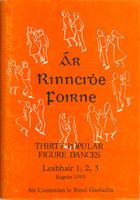
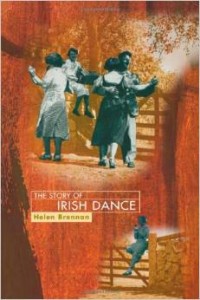
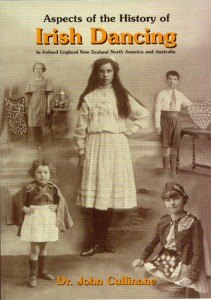
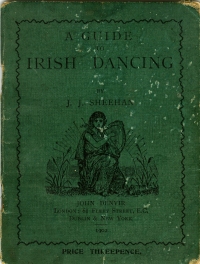
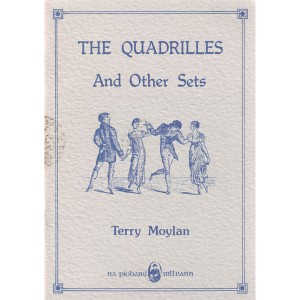
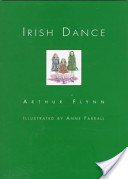
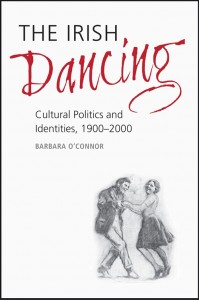
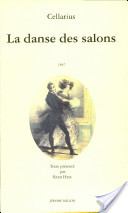
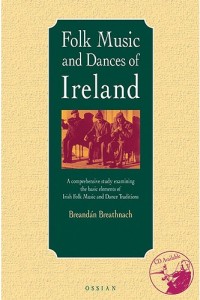
One Comment
This is extremely useful and erudite. Thank you!